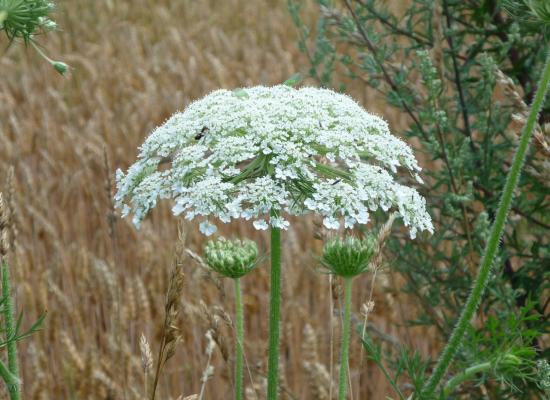
Weed Inspection
The Weed Control Act was originally drafted by provincial legislators in the late 1800's to achieve control of noxious weeds that interfere with land used for industries of agriculture and horticulture. By regulation, twenty-four (24) weeds in Ontario have been designated as noxious; their common names are listed below. With some exceptions the Act requires that these weeds and weed seeds be destroyed by the landowner where they are found growing.
As required by the Act, the County has appointed an Area Weed Inspector to undertake the administration and enforcement of the Act. Under the Act, the Area Weed Inspector is empowered to search and inspect lands and issue written orders for the destruction of noxious weeds. The only exception to the requirement of issuing written orders is set out in Section 16 of the Act.
The Council of any city, town village or township may direct any of its municipal weed inspectors or, if there are none, the area weed inspectors to cause noxious weeds or weed seeds to be destroyed in the prescribed manner on all or part of any lot shown on a registered plan of subdivision and on lots not exceeding 10 acres that are not shown on such a plan. Before noxious weeds or weed seeds are destroyed, the council shall publish notice of its intent to have the noxious weeds or weed seeds destroyed in a newspaper having general circulation in the municipality. Typically, the notice appears in local newspapers in early summer each year and requires that weeds be destroyed by July 15th of that year.
Penalties are provided for non-compliance. The schedule of charges for non-compliance is as follows:
- 1st offence: $500 to $2000
- Subsequent Offences: $1,000 to $5,000
The Ontario Ministry of Agriculture and Food, the ministry responsible for provincial administration of the Act, interprets the intent of the Weed Control Act as follows:
- To reduce the infestation of noxious weeds that impact on the industries of agriculture and horticulture.
- To reduce plant diseases by eliminating plant disease hosts such as common barberry and European buckthorn.
- To reduce health hazards to livestock caused by poisonous plants.
In practical terms this interpretation means that in most instances the Act will not be enforced in urban or suburban areas or where a commercial agricultural or horticultural operation is not likely to be affected by noxious weeds. Section 22 of the Act allows the Weed Inspector to exercise considerable judgement when enforcing the Act. It provides that noxious weeds or weed seeds that are far enough away from any land used for agricultural or horticultural purposes that they do not interfere with that use do not have to be destroyed.
Helpful Links
- For a listing of noxious weeds as set out in the weed control act, visit Ontario Ministry of Agriculture, Food & Rural Affairs website.
- For further information, please visit the Weed Identification Guide for Ontario Crops
- Read the complete Weed Control Act here.
Request More Information
